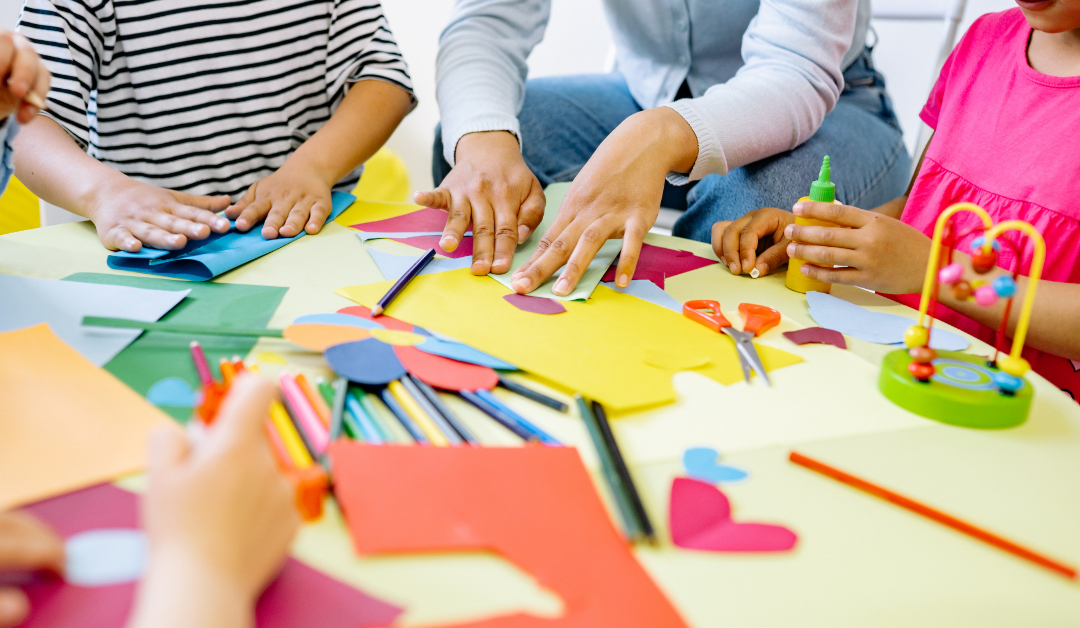Art in early childhood is so much more than coloring inside the lines or taking home a “pretty picture” for the fridge. At our preschool daycare, we believe that every splash of paint and glitter-streaked masterpiece holds a more profound purpose, supporting your child’s growth in exciting and meaningful ways.
In the early years, art is a powerful tool. It encourages creativity, self-expression, problem-solving, and even builds the fine motor skills children need for writing and self-care later on. When we give children the freedom to explore through art, we’re not just keeping them busy, we are helping them grow.
Why Art Matters in Early Childhood Education
Art plays a vital role in childcare and early childhood education because it engages multiple areas of development at once. It’s not just about making something beautiful, it is about learning through doing. Here’s how:
- Creativity: Open-ended activities like painting, sculpting or collage making allow children to make choices, try new ideas, and imagine new worlds. It allows children to become problem-solvers who aren’t afraid to try new things or make mistakes.
- Self-expression: Young children don’t always have the words to explain how they feel. Art becomes their language. A swirling red painting might be their way of expressing excitement or frustration. This supports emotional awareness and regulation.
- Problem-Solving: Mixing colors, deciding what to glue where, or figuring out how to turn a box into a rocket, all these small decisions build confidence and critical thinking. Art activities involve planning, memory, and decision-making.
- Fine Motor Skills: Holding crayons, cutting with scissors, squeezing glue bottles – all these tasks strengthen the muscles needed for writing, eating, and dressing themselves.
These aren’t cute moments; they are an essential part of your child’s development.
What Art Looks Like at our Preschool
Our preschool classrooms are full of inviting, hands-on art experiences designed to let kids explore freely. We don’t focus on perfect results; we focus on the process.
Some of our favorite messy-yet-meaningful activities include:
- Finger paints with natural materials like leaves and sponges
- Sculpting with homemade play-dough or clay
- Collage making with paper scraps, buttons, and recycled materials
- Group murals where children work together on one large canvas
Each activity is carefully designed to be developmentally appropriate, safe and engaging. Yes, sometimes we do get messy, but that mess is the magic of learning in action.

The Role of Teachings in Creative Learning
Our teachers are not just supervising these activities, they are guiding them with purpose. They observe, ask open-ended questions, and support each child’s ideas. This scaffolding encourages both language development and social interaction.
Rather than directing the art, they guide it by offering materials, asking thoughtful questions, and encouraging reflection.

For example:
- “Tell me about what you made.”
- “What do you think will happen if you mix those colors?”
- “How did you come up with that idea?”
These conversations help children expand their vocabulary, build confidence, and feel proud of their efforts.
Teachers also use art as a tool to connect with other learning areas: color and shapes, storytelling, and even science experiments like mixing baking soda and vinegar to paint.
Why Art is Essential in Preschool
In preschool, art is a daily opportunity to support the whole child. It’s calming for some, energizing for others, and always full of discovery. At our preschool, we honor every child’s unique expression and provide the space and materials to bring their ideas to life.
To us, a paint splattered smock and sticky fingers are signs of something bigger: a child who is exploring, growing, and learning in the best way possible.

